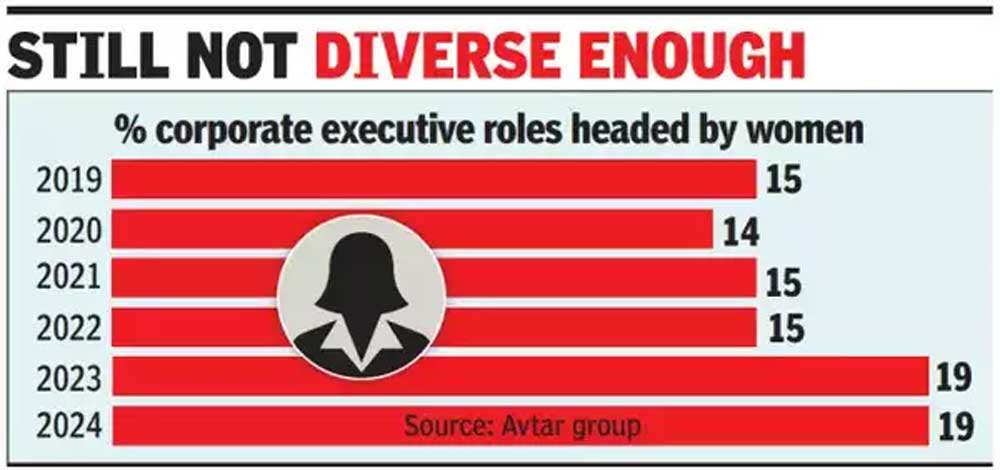According to a study by workplace culture consulting firm Avtar, women still make up only 19 per cent of C-suite positions in India. Despite continuous attempts by Indian firms and regulatory agencies to increase gender diversity, this figure is still much lower than the 30 per cent global average, highlighting the urgent need for focused efforts to close the gap.

About 60 per cent of research participants mentioned the challenges of integrating work-life balance as one of the main barriers preventing women from rising to leadership roles.

Senior leadership attrition rates are a further cause for concern. These rates increased significantly during the pandemic, from 4 per cent in 2019 to 10 per cent in 2020, mostly as a result of its disproportionate effect on women’s jobs. Modest surges were observed in 2023 (9 per cent) and 2024 (declining to 8 per cent), but the numbers are still lower than they were prior to the pandemic, suggesting that there are still issues keeping women in leadership positions.
The fact that women only make up 19 per cent of C-suite positions in India is a result of structural impediments that continue to hinder women’s advancement, not a lack of competence. Opportunities have been distributed based on presumptions rather than merit for far too long, perpetuating a cycle in which women are under-utilised for the same roles in which they are capable of succeeding.

Progress is nevertheless hampered by gender bias in hiring and promotion, as reported by 44 per cent of respondents. Many believe that using artificial intelligence and data-driven methods could reduce bias and promote equal chances for women in leadership roles. The lack of competent female candidates in leadership positions is another major obstacle, as indicated by 41 per cent of respondents. To make significant progress in gender diversity at the top, one has to overcome issues like work-life balance, organisational culture, and enduring gender bias.

In order to create a culture of support, improve opportunities, and guarantee that women are represented in leadership positions throughout India, the report urges extensive organisational reforms. The 19 per cent statistic serves as an opportunity as well as a stark reminder of the imbalance that exists. By dismantling unofficial obstacles and antiquated conventions, companies may create inclusive workplaces that promote equity and productivity. The way forward is obvious: companies that foster diverse leadership will not only act morally, but will also encourage increased creativity, adaptability, and long-term success.
Image source: Business Standard, TOI, Forbes India